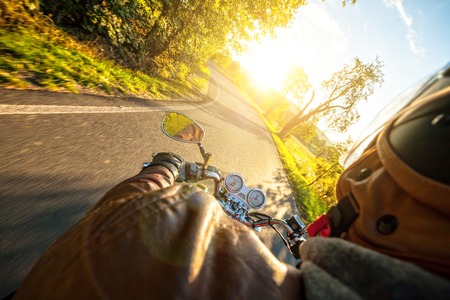Introduction to Cycling and Camping in the Lake District
The Lake District is a true jewel of the British countryside, celebrated for its rugged fells, shimmering lakes, and picturesque villages. Located in the northwest of England, it’s a national park steeped in history, poetry, and a deep appreciation for the great outdoors. For cyclists, the region is a dream: winding country lanes, challenging hill climbs, and breathtaking descents are all part of the experience. The UK’s cycling culture has boomed in recent years, with more people than ever embracing two wheels as a way to explore the landscape at their own pace.
Combining cycling with wild camping takes this adventure to another level. It’s not just about covering ground; it’s about total immersion. By carrying your tent and kit on your bike, you’re free to camp in secluded spots under star-filled skies—making each day on the road uniquely yours. This blend of self-sufficiency and freedom is at the heart of British outdoor spirit. Whether you’re looking for solitude atop a misty fell or camaraderie around a campfire beside a lake, cycling and camping in the Lake District offers an unrivalled way to experience nature, challenge yourself, and create lasting memories—all while respecting local traditions and responsible travel ethics.
2. Planning Your Route and Essentials
Tips for Mapping Out Scenic Trails
The Lake District is a haven for cyclists, with routes ranging from gentle lakeside paths to challenging mountain passes. When planning your adventure, start by researching cycle-friendly trails such as the Windermere Western Shore Cycle Trail, Grizedale Forest routes, or the Keswick to Threlkeld Railway Path. Make use of resources like Ordnance Survey maps and the National Park’s official website for up-to-date trail information. It’s wise to plan your daily mileage realistically—allow time for stops at viewpoints, village pubs, or a quick dip in one of the lakes.
Recommended Mapping Tools
| Tool/App | Features |
|---|---|
| Komoot | UK-specific cycling routes, offline maps, elevation profiles |
| OS Maps | Detailed topographical maps, route planning, GPX export |
| CycleStreets | Cyclist-friendly navigation with local insights |
Essentials for Bike Touring in the UK
Packing efficiently makes all the difference on a bike tour. The British weather is famously unpredictable, so waterproofs are a must—even in summer. Use panniers or bikepacking bags to distribute weight evenly and keep your gear dry with roll-top waterproof bags. Here’s a quick checklist of essentials tailored for UK conditions:
| Category | Must-Haves |
|---|---|
| Cycling Gear | Puncture repair kit, multi-tool, front & rear lights (required by law at night), high-visibility jacket, helmet (strongly recommended) |
| Camping Kit | Lightweight tent, sleeping bag rated for UK nights, camping stove (check gas canister compatibility), reusable water bottle/filter |
| Clothing | Waterproof jacket & trousers, base layers, warm fleece/jumper, gloves & hat (even in summer) |
| Navigation & Safety | Physical map as backup, power bank, emergency whistle, personal first aid kit |
| Food Supplies | Dried meals/snacks (Scroggin/trail mix is popular), portable coffee/tea set-up (because nothing beats a brew with a view) |
Local Rules: Cycling and Camping in the Lake District National Park
The Lake District National Park welcomes cyclists but has clear guidelines to protect its unique landscape:
- Cycling: Stick to bridleways and designated cycle paths—cycling on footpaths is not permitted.
- Wild Camping: Technically not allowed without landowner permission. However, discreet ‘leave no trace’ bivvying is tolerated in remote areas if you arrive late and leave early. Always respect signage and avoid disturbing livestock.
- Campsites: There are many cycle-friendly campsites throughout the park offering hot showers and secure bike storage—book ahead during peak season.
- Litter & Fires: Take all rubbish home and never light open fires; use a camping stove instead.
- Respect Local Life: Close gates behind you and be mindful of walkers and wildlife on shared paths.
Your Lake District cycling adventure will be much smoother with careful planning—know your route, pack smartly for British conditions, and always follow local guidelines to help preserve this stunning landscape for everyone.

3. Choosing the Right Gear: Bikes, Tents, and More
If you’re planning to explore the Lake District by bike and tent, getting your kit spot on is essential. The area’s famous for its undulating roads, sudden showers, and breathtaking scenery—so every bit of gear matters.
Breakdown: Popular Bike Types for Hilly UK Terrain
The Lake District is rarely flat. For tackling the region’s steep climbs and winding descents, a lightweight road bike or a gravel bike with wider tyres is ideal. Road bikes are perfect for tarmac and speedy ascents, but if you fancy mixing in bridleways or rougher tracks, a gravel or adventure bike offers more comfort and grip. Mountain bikes are overkill unless you’re sticking exclusively to off-road trails. Look for a reliable set of gears (at least a compact 50/34 chainset or even a triple crank) to handle those infamous gradients like Hardknott Pass.
Recommended Lightweight Tents
British weather can turn on a sixpence, so your shelter should be up to the challenge. Opt for a lightweight, waterproof tent—ideally under 2kg if you’re carrying it on your back or panniers. Popular choices among UK bikepackers include the Vango Nevis 100 (affordable, sturdy, packs down small) or the MSR Hubba NX Solo (a touch pricier, but super light and reliable). Always check for a decent hydrostatic head rating (3000mm+), taped seams, and good ventilation to manage condensation during wet Cumbrian nights.
Must-Have Kit for Unpredictable Lake District Weather
- Waterproofs: A proper waterproof jacket (think Gore-Tex or similar) and overtrousers are non-negotiable.
- Layers: Pack merino base layers and a warm mid-layer—it gets chilly after sundown even in summer.
- Panniers or Bikepacking Bags: Ortlieb or Alpkit bags keep your kit dry and stable on bumpy lanes.
- Stove & Brew Kit: Nothing beats a hot cuppa after a long day riding—bring a compact stove and tea bags!
- Navigation: OS maps, Komoot app on your phone, or a GPS device—the Lakes’ narrow lanes can be maze-like.
Other Essentials
- Power bank for charging devices
- Bivy bag as an emergency backup
- Puncture repair kit and multi-tool
Pro Tip:
Always pack extra snacks—shops can be few and far between once you leave the villages. With the right gear dialled in, you’ll enjoy every pedal stroke, whatever the Cumbrian skies throw at you.
4. Navigating Accommodation: From Wild Camping to Campsites
When cycling the Lake District with just your tent, accommodation becomes a daily adventure. The region offers a range of options—from official campsites with facilities to wild camping in the fells. Understanding your choices and following local guidelines is key for a safe and respectful trip.
Guide to the Best Legal Camping Spots
The Lake District boasts numerous campsites that cater to cyclists. Here’s a quick overview of some top-rated, bike-friendly sites:
| Campsite Name | Location | Facilities | Bike Storage |
|---|---|---|---|
| Great Langdale Campsite | Langdale Valley | Showers, shop, pub nearby | Yes (lock-up) |
| Castlerigg Hall Caravan & Camping Park | Keswick area | Laundry, WiFi, café | Limited racks |
| Sykeside Camping Park | Patterdale, Ullswater | Onsite bar, shop, showers | Outdoor racks |
Always book ahead during peak months (May–September), as pitches fill quickly—especially those close to popular cycling routes.
How to Wild Camp Responsibly in the Lake District
Wild camping isn’t strictly legal in England and Wales but is tolerated in much of the Lake District if done discreetly and respectfully. Key principles include:
- Avoid camping near roads or settlements—aim for remote fellside locations well out of sight.
- Pitch late and leave early; stay only one night at each spot.
- No campfires—use a small stove for cooking.
- Take all litter with you and leave no trace whatsoever.
Top Tips for Responsible Wild Camping:
- Check weather conditions before heading out into higher ground.
- Campsites are preferable if you need facilities or are new to wild camping.
Key Contact: National Park Rangers can advise on sensitive areas or recent issues—don’t hesitate to ask at visitor centres.
Tips for Booking Local Campsites
If you prefer guaranteed comfort after a day’s ride, booking a proper campsite is wise. Some advice:
- Use local websites like Lake District National Park Camping Guide.
- If travelling spontaneously, call ahead in the morning—many sites will hold a pitch for late arrivals by bike.
- Mention you’re cycling; some sites offer discounts or special cyclist pitches.
Whether you choose wild solitude or campsite camaraderie, planning your accommodation carefully ensures every night under canvas is part of your Lake District adventure.
5. Safety, Etiquette, and British Outdoor Norms
Exploring the Lake District by bike and tent is an unforgettable experience, but staying safe and respecting local customs is essential for a smooth adventure. Here’s how to blend in with seasoned ramblers and locals while making the most of your trip.
Stay Safe on the Trails and Roads
The Lake District’s winding lanes and bridleways can be challenging, especially in unpredictable weather. Always wear a helmet and high-visibility gear; British weather can turn quickly, so pack waterproofs even if the day starts sunny. Let someone know your planned route before heading out, and keep your phone charged in case you need assistance—signal can be patchy in remote spots.
Share the Path: Passing Walkers (Ramblers)
Cyclists often share trails with walkers, known locally as “ramblers.” Slow down when approaching from behind, ring your bell gently or call out “on your right/left,” and always give way on narrow paths. A friendly “cheers” or “thank you” goes a long way—Brits value politeness! If passing groups or families, dismount if space is tight to show respect.
Road Sharing: Respect for All Users
The Lake District’s country roads are narrow, frequently winding through villages where sheep and tractors set the pace. Ride single file, particularly on busy or blind bends. At junctions and crossings, make eye contact with drivers—a nod or wave is customary. Remember, under British law, cyclists have equal rights on the road but are expected to be courteous and predictable.
Respecting Nature and Local Customs
The Lake District National Park is cherished for its natural beauty. Stick to marked trails to protect fragile ecosystems, avoid leaving litter (carry out what you carry in), and never light open fires. Wild camping is tolerated if done discreetly—pitch late, leave early, and camp above the highest fell wall away from livestock. Greet fellow adventurers with a friendly “morning” or “afternoon”—it’s part of the local charm.
Embracing the British Way
Finally, remember that enjoying the Lakes means embracing its traditions: respectful silence at viewpoints, patience in queues (yes, even at popular summits!), and a willingness to help others in need. Your consideration ensures not only your own safety but also preserves this treasured landscape for generations to come.
6. Sample Itineraries and Top Cycle Routes
Whether you’re a beginner looking for gentle trails or an experienced cyclist after a challenge, the Lake District offers a wealth of cycle routes that showcase its spectacular scenery and warm northern hospitality. Here are some hand-picked itineraries to suit different ability levels, with tips on what to see, where to pause for a proper cuppa, and the segments you simply can’t miss.
For Beginners: Windermere to Ambleside Loop
This 20-kilometre circular route is perfect for those new to cycling in the Lakes. Start from Windermere village and follow quiet country lanes towards Ambleside, passing lush meadows and stone cottages. Be sure to stop at a local tearoom in Ambleside for a classic cream tea—try The Apple Pie Café for a real treat. The ride features gentle gradients and plenty of places to pull over for photos.
Intermediate Adventure: Coniston Water Circuit
Ready for something more adventurous? The 40-kilometre loop around Coniston Water combines lakeside roads with woodland trails. Head clockwise from Coniston village, taking in Peel Island (known as ‘Wild Cat Island’ from Swallows and Amazons fame) along the way. There are several picnic spots by the water’s edge—ideal for a flask of tea and some home-made cake. Don’t miss the detour up Hawkshead Hill for panoramic views across the fells.
For Experienced Riders: The Langdale & Wrynose Passes
If it’s leg-burning climbs you’re after, tackle the legendary Wrynose and Hardknott Passes—a rite of passage for seasoned UK cyclists. This 50-kilometre ride starts in Grasmere, winding through Great Langdale before climbing over two of Britain’s steepest road passes. Take your time; the gradients are fierce but the views are staggering. Reward yourself with a brew at Three Shires Inn in Little Langdale or a hearty pie at Sticklebarn Tavern afterwards.
Must-Ride Segments
- The Keswick Railway Path: A family-friendly, traffic-free track following an old railway line between Keswick and Threlkeld—great for leisurely pedalling and wildlife spotting.
- Borrowdale Valley: A scenic stretch ideal for wild camping opportunities, with ancient woodlands and quiet lakeshore pitches.
- The West Windermere Trail: Recently opened multi-use path linking Newby Bridge to Windermere town, perfect for mixed groups and e-bikes.
Local Tips
- Always check weather conditions before setting out—the Lakes can change quickly!
- Pubs and cafés often welcome muddy boots and bikes; don’t be shy about popping in for a bacon butty or scone.
- Respect local access rules if wild camping—leave no trace and keep noise down after dark.
With these routes, you’ll experience the best of Cumbrian landscapes on two wheels—whether you fancy a gentle jaunt or an all-day epic, there’s always somewhere inviting nearby to stop for that essential British brew.
7. Practical Tips and Real-World Advice
Down-to-Earth Insights from Seasoned Local Riders
If you’re planning to explore the Lake District by bike and tent, it pays to learn from those who’ve pedalled these hills before you. Here’s some practical advice, straight from local cyclists who know the fells like the back of their hand.
Dealing with Rain – Embrace It!
The Lake District is famed for its dramatic weather, and rain is part of the adventure. Don’t wait for a dry forecast—invest in a proper waterproof jacket, quick-dry base layers, and full-finger gloves. Local riders swear by mudguards and keeping spare dry socks in a zip-lock bag. Accept that you’ll get wet at some point; a positive attitude makes all the difference.
Finding Decent Pubs – The Heart of British Bike-Packing Culture
No bike tour in the Lakes is complete without a stop at a traditional pub. Villages like Grasmere, Ambleside, and Hawkshead are packed with cosy options. Ask locals for recommendations—they’ll always point you towards somewhere with hearty food and a good pint. Many pubs have bike racks or will let you tuck your ride out of sight if you ask nicely. Remember: muddy boots and Lycra are welcome here!
Making the Most of British Bike-Packing Culture
The UK bike-packing scene is all about community and resourcefulness. Don’t be shy about chatting with fellow riders on the trail or at campsites—swapping stories is part of the fun. Wild camping is tolerated if you’re discreet (always follow Leave No Trace principles), but many local farmers will let you pitch up for a small donation—just knock on their door and ask politely.
Extra Local Wisdom
- Start early to beat crowds on popular routes.
- Cafés often welcome soggy cyclists—support local businesses by popping in for tea and cake.
- Phone signal can be patchy; download maps in advance and bring a power bank.
- If your kit fails, local bike shops in Kendal or Keswick can work wonders—even at short notice.
The Lake District’s landscapes are world-class, but it’s the British quirks—rainy weather chats, steaming mugs in warm pubs, friendly nods from fellow cyclists—that make bike-packing here truly unforgettable.


